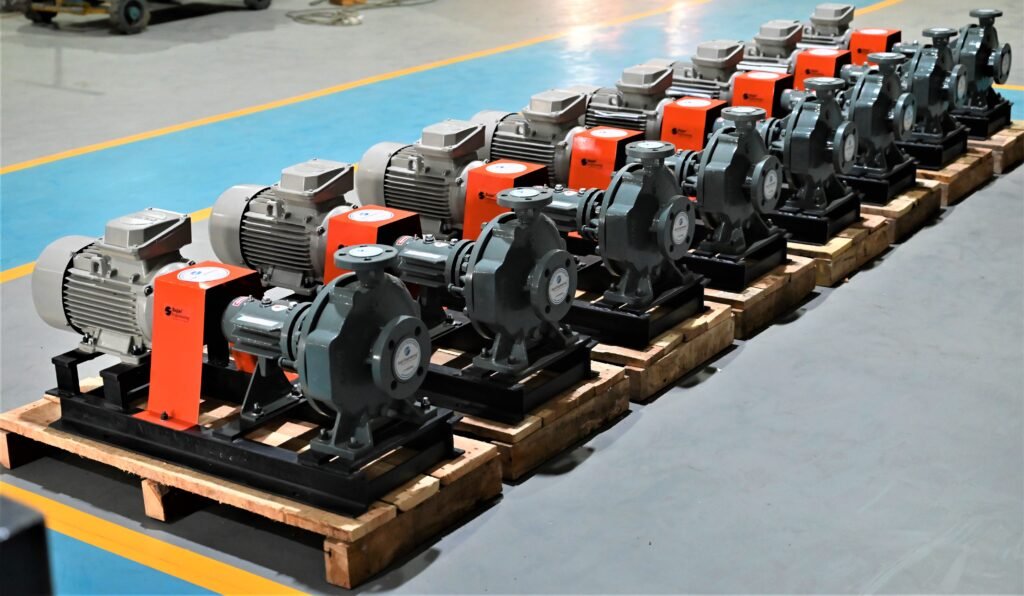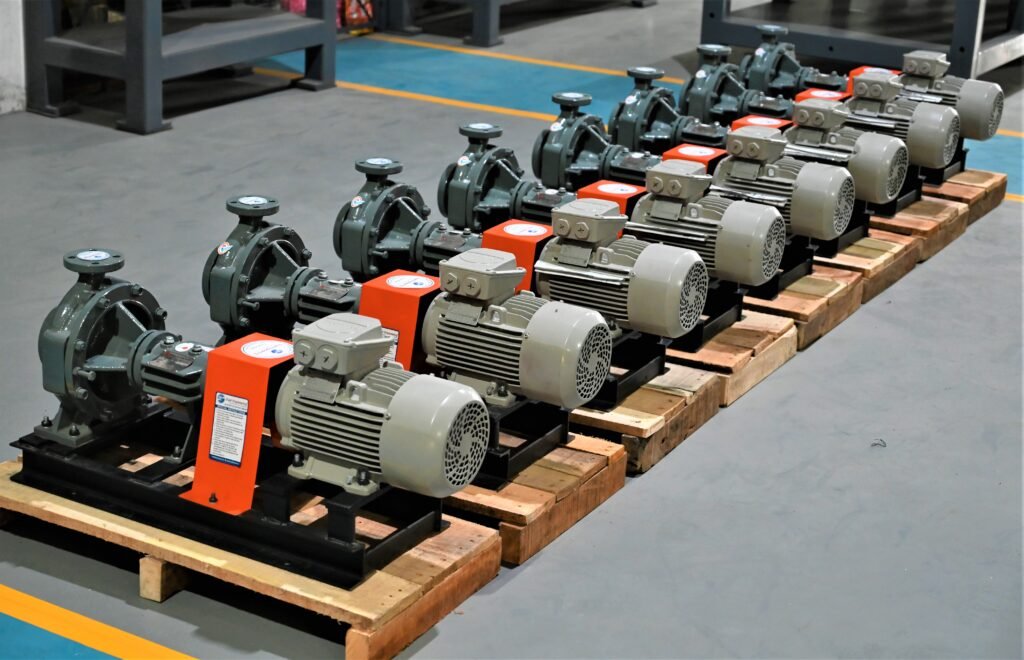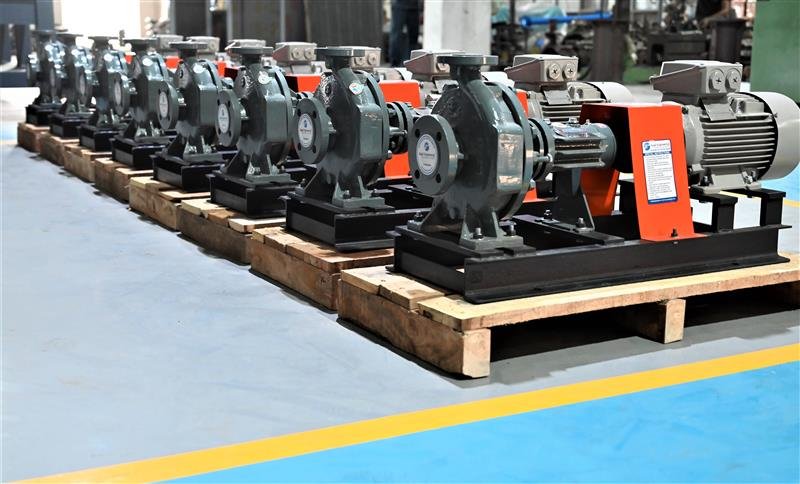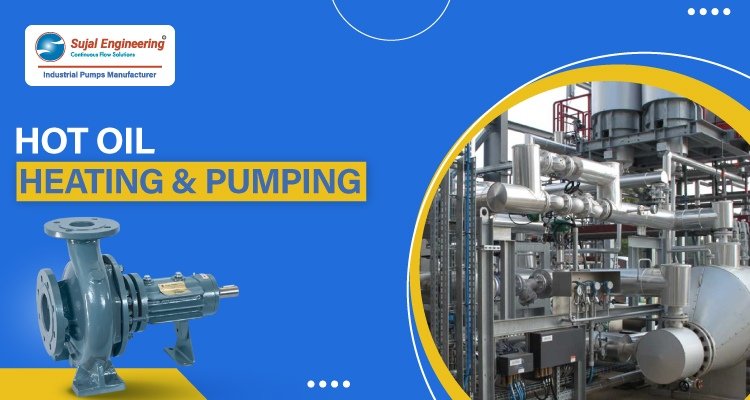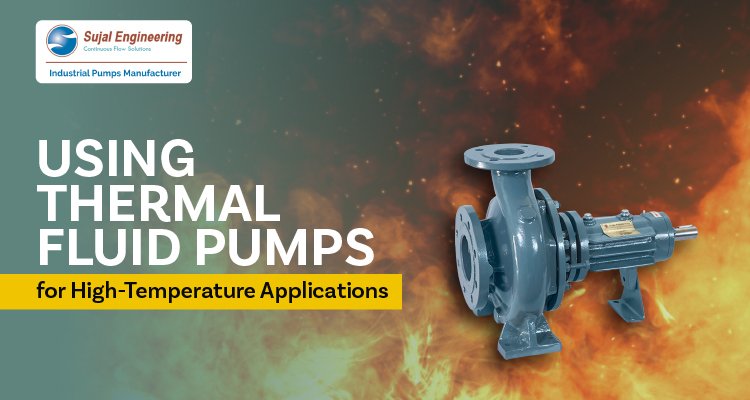How Thermic Fluid hot oil Pumps Work: A Deep Dive into Thermal Transfer Technology
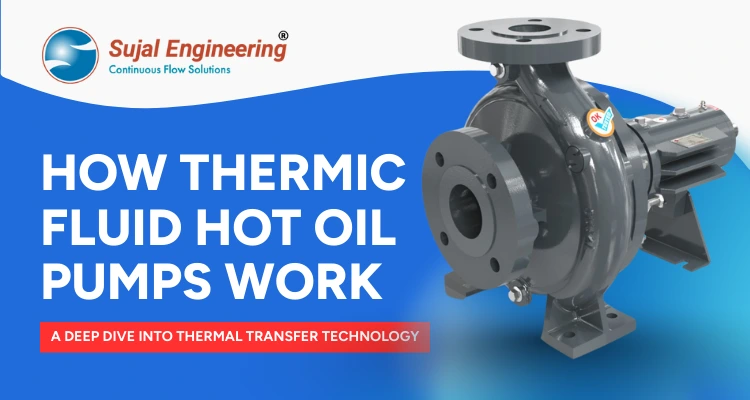
Introduction
In the world of industrial processes, handling high temperatures is a constant challenge. It requires reliable, specialized equipment that can ensure safety and efficiency without costly downtime.
At Sujal Engineering, we have decades of experience helping businesses in the chemical, textile, food processing, and marine industries optimize their thermal transfer systems. This detailed guide will walk you through everything you need to know about the inner workings of thermic fluid pumps and why they are the key to unlocking superior performance.
What is a Thermic Fluid Hot Oil Pump?
A thermic fluid pump is a specialized centrifugal pump designed to circulate heat transfer fluids, such as synthetic or mineral oils, at extremely high temperatures. Unlike standard water pumps, these are engineered to operate in conditions where temperatures can exceed 300°C (572°F) without the fluid boiling or creating high pressure. They act as the circulatory system for a closed loop heating circuit, moving the hot oil from a heater to the process equipment and back again.
When your hot oil pump is operating correctly, it can:
- Circulate hot fluids efficiently and safely.
- Maintain consistent and uniform temperatures across a process.
- Operate at low pressure, reducing safety risks.
- Ensure smooth, uninterrupted production.
Without a thermic fluid pump, a high-temperature system would fail. The lack of fluid circulation would lead to uneven heating, inefficiency, and potential damage to critical components, making the pump an indispensable part of thermal transfer technology.
How Hot Oil Pumps Use Thermal Transfer Technology?
Hot oil pumps are a key part of systems that use Thermal Transfer Technology to create heat. The pump is what keeps this whole “heat delivery” system moving, making sure the hot oil gets to where it needs to go without any problems.
- Job of the Pump: The pump’s main job is to push a special, high-temperature liquid (often called “thermic fluid” or “hot oil”) through a network of pipes.
- Getting Hot: A heater warms up this oil to a very high temperature.
- Sharing the Heat: The pump then circulates this super-hot oil to the machinery or area that needs heat. The oil gives off its heat to whatever it touches, warming it up.
- Safe and Easy: A great thing about this method is that it can get very hot without needing a lot of pressure. This makes the whole system much safer and easier to manage than other methods, like using steam.
- Round and Round: Once the oil has delivered its heat, it goes back to the heater to be warmed up again. The pump keeps this cycle going smoothly, ensuring everything gets heated evenly.
Why Are Thermic Fluid Pumps Critical?
Choosing a thermic fluid system over a traditional steam boiler offers numerous advantages. It is a decision that impacts not just efficiency but also safety and long-term operational costs. The fundamental benefits of these pumps are tied directly to the nature of the fluid they handle.
Here’s why thermic fluid pumps are critical:
- Enhanced Safety: They operate at low pressure, drastically reducing the risk of explosions or leaks compared to high-pressure steam systems.
- Energy Efficiency: There is no energy loss due to condensate flash steam, and the system requires less maintenance and supervision.
- Reduced Maintenance: With fewer components prone to corrosion or wear from high pressure, these systems require less frequent maintenance and repair.
- Precise Temperature Control: Thermic fluid systems allow for very accurate and stable temperature management, which is essential for sensitive processes.
How Does a Thermic Fluid Pump Work?
The core principle of a thermic fluid pump is the same as a conventional centrifugal pump, using a rotating impeller to create flow. However, the design is specifically modified to handle the challenges posed by extreme heat.
Here’s how it works:
- The Centrifugal Force: A spinning impeller within the pump casing creates a vacuum at its center, drawing in hot fluid. The fluid is then flung outward by centrifugal force, gaining velocity and pressure as it moves towards the pump’s discharge outlet.
- Automatic Heat Dissipation: Sujal Engineering’s hot oil pumps feature a unique air-cooled shaft and a long, finned pump frame. This design creates a thermal barrier, allowing the heat from the pump casing to dissipate naturally into the atmosphere, protecting the bearings and seals from overheating without any external cooling.
Key Components:
- Robust Casing: Made from heat-resistant materials like cast steel or nodular cast iron.
- Air-Cooled Shaft: A vital design feature that protects the bearings and mechanical seal from high temperatures.
- Mechanical Seal: A specialized, high-temperature seal that prevents leaks.
- Balanced Impeller: Prevents vibration and ensures smooth operation, extending the pump’s lifespan.
This clever and self-sufficient design is a testament to why thermic fluid systems are so reliable and efficient.
Where Hot Oil Pumps Are Essential?
The versatility and reliability of thermic fluid pumps make them a cornerstone of modern industrial processes. Their ability to deliver consistent, safe heat is invaluable across many sectors.
Here are the key industries where they are indispensable:
- Chemical & Petrochemical: Used for heating reactors, distillation columns, and chemical vessels, ensuring precise temperatures for synthesis.
- Textile Industry: Essential for heating stenter machines and dryers, critical for setting and finishing fabrics.
- Food & Beverage: Utilized in baking, frying, and pasteurization processes that require clean, indirect heat to avoid product scorching.
- Plastics & Rubber: Vital for heating extruders, molds, and calendars, ensuring the polymer melts and forms correctly.
- Wood Processing: Employed in the production of wood particle boards and for heating rollers in paper mills.
- Asphalt & Bitumen: Critical for maintaining the temperature of these highly viscous fluids, allowing them to be pumped and handled effectively.
Each of these applications requires a custom-engineered solution, and this is where the expertise of Sujal Engineering truly shines, providing tailored pumps that perfectly fit your operational needs.
How to keep your Hot Oil Pump running smoothly?
To make sure your hot oil pump works its best for a long time, you need to use it and take care of it properly. Follow these simple tips to keep it running efficiently and prevent problems.
Regular Checks:
- Check the pressure: Look at the pressure gauges to make sure they’re not jumping around. If they are, it might mean there’s air or gas bubbles in the system.
- Look for leaks: Check all the seals and connections for any drips. Leaks can be dangerous.
- Listen to the pump: The pump should have a smooth, steady hum. If you hear strange sounds like gurgling or grinding, it’s a sign something is wrong.
- Watch the motor’s power usage: If the motor is using more power than usual or the power level keeps changing, it could mean there’s a problem with the fluid flow or the pump itself.
Weekly Maintenance:
- Feel the shaft and bearings: Check if the cooling area on the pump’s shaft is getting too hot.
- Review your records: Keep a log of any issues that come up often and fix them right away.
- Check the fluid: Make sure the hot oil is clean. If it’s dirty or breaking down, it can harm the pump’s performance.
Conclusion:
The thermic fluid pump is more than just a piece of equipment; it is the cornerstone of safe, efficient, and precise thermal transfer technology. By providing a low-pressure, high-temperature solution, these pumps are helping industries reduce costs, enhance safety, and improve overall performance. Whether your business is in chemical processing, food manufacturing, or textiles, a well-designed and properly maintained thermic fluid system is an investment that pays for itself.
Key Success Points:
- Precision: Achieve stable and uniform temperatures for your processes.
- Safety: Operate at low pressure, reducing risks for your team and facility.
- Efficiency: Reduce energy waste and lower maintenance costs.
- Reliability: Rely on a durable pump built for demanding high-temperature environments.
Ready to upgrade your thermal system? Sujal Engineering offers complete industrial pump solutions and expert support to help you achieve your goals. Contact Sujal Engineering to discuss your thermal transfer challenges and explore our professional services.
FAQs
1. What is a thermic fluid pump?
It’s a special pump that circulates hot oil or another heat transfer fluid in a closed system to deliver heat for industrial processes.
2. What is “thermal transfer technology”?
This is the method of using a heated fluid (like oil) to carry and transfer heat from one place to another without direct contact.
3. Why use hot oil instead of steam for heat?
Hot oil systems can reach very high temperatures at low pressure, making them safer and more efficient than high-pressure steam systems.
4. What is the main job of the pump in this system?
Its primary role is to keep the hot oil moving in a continuous loop, ensuring a steady and even flow of heat to the equipment.
5. How do these systems get so hot?
A heater warms the thermic fluid, and the pump circulates this fluid to transfer the heat.
6. Are these pumps used for heating homes?
No, thermic fluid pumps are typically used in industrial settings for manufacturing processes that require high, controlled temperatures.
7. What are the benefits of using this type of pump?
It allows for safe, low-pressure heating at high temperatures, and the system is easy to control and maintain.
Read More
How AODD Pump Features Simplify Your Pumping Easy?
The Impact of Viscosity on the Efficiency and Performance of Industrial Pumps
Essential Pumps for Oil Refineries: Meeting the Needs of All Difficulties


